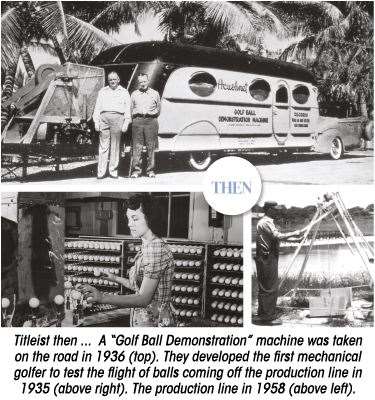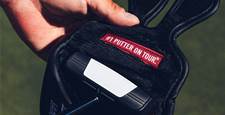80 years of experience, four manufacturing plants and 40,000 testers; just three of the things it takes for Titleist to produce ...
Titleist’s pursuit of excellence involves extensive testing, research and development, but in an age when the likes of Srixon, TaylorMade, Callaway and Nike all have their piece of the market, what sets Titleist’s processes aside from that of its rivals? “I think the fact that we have our own proprietary technology that we have developed. There are certain elements to it that are common for any golf ball manufacturing, but to a large degree what you see was designed and built in our own manufacturing facilities by our associates, and that’s becoming more and more rare these days. So the fact that we control the processes is a significant advantage,” adds Mahoney.
 “Our level of quality check that exists throughout the process is unprecedented – and there are many, many steps in making a golf ball. We take samples from the very first stage and test it to make sure it meets our performance specifications. The testing criteria we set up for any product really happens throughout the process, whether it be core moulding to adding the casing layer, putting the urethane cover on, to the paint process, to the stamping – there are quality checks every step of the way and that results in a very consistent product coming off the line.” We’ve been told that even a slightly lighter imprint on the “T” in the logo is enough to reject a ball.
“Our level of quality check that exists throughout the process is unprecedented – and there are many, many steps in making a golf ball. We take samples from the very first stage and test it to make sure it meets our performance specifications. The testing criteria we set up for any product really happens throughout the process, whether it be core moulding to adding the casing layer, putting the urethane cover on, to the paint process, to the stamping – there are quality checks every step of the way and that results in a very consistent product coming off the line.” We’ve been told that even a slightly lighter imprint on the “T” in the logo is enough to reject a ball.
And it’s not just Titleist balls that get the testing treatment, either. “We run more tests on golf balls than any other manufacturer and it’s probably more than all the others combined,” says Mahoney. “The companies that make the robot testing devices we use tell us we wear out parts that they wouldn’t see worn out in other places.”
On the production line, the material for the core begins as a slab of rubber which is fed into something resembling a pasta-maker. The result is a long sheet, which is left to cool for up to ten hours before being sliced into long, thin strips. The strips are cut into smaller pieces, which are placed into a mould that shapes the core. The cover is then attached in two pieces, which are spot-welded together, before the whole thing is placed in a dimpled mould and turned into a sphere under heat and pressure. The ball is then buffed to erase a ridge left by the two halves before the logo and number are stamped on, and two spray guns apply a latex primer and finishing coat. All that, so anyone from an 18-handicapper or Adam Scott can trust their ball.
Titleist’s presence on Tour is, and always has been, impressive. In 2012, Pro V1s recorded 190 wins on worldwide tours, and as demand for the products grew in the brand’s formative years, Titleist hit on a novel way of making sure their reps were easy to spot. Mahoney told us: “Back when we started out on Tour, one of the things that was so important to our brand message – and this remains today – was that the ball you could buy in your golf shop was the same ball we were giving to pros, it was that good.
Related Articles

Motocaddy Australia throws support behind Cancer Council’s The Longest Day

Perfectly Fitting: The ultimate fitting guide













